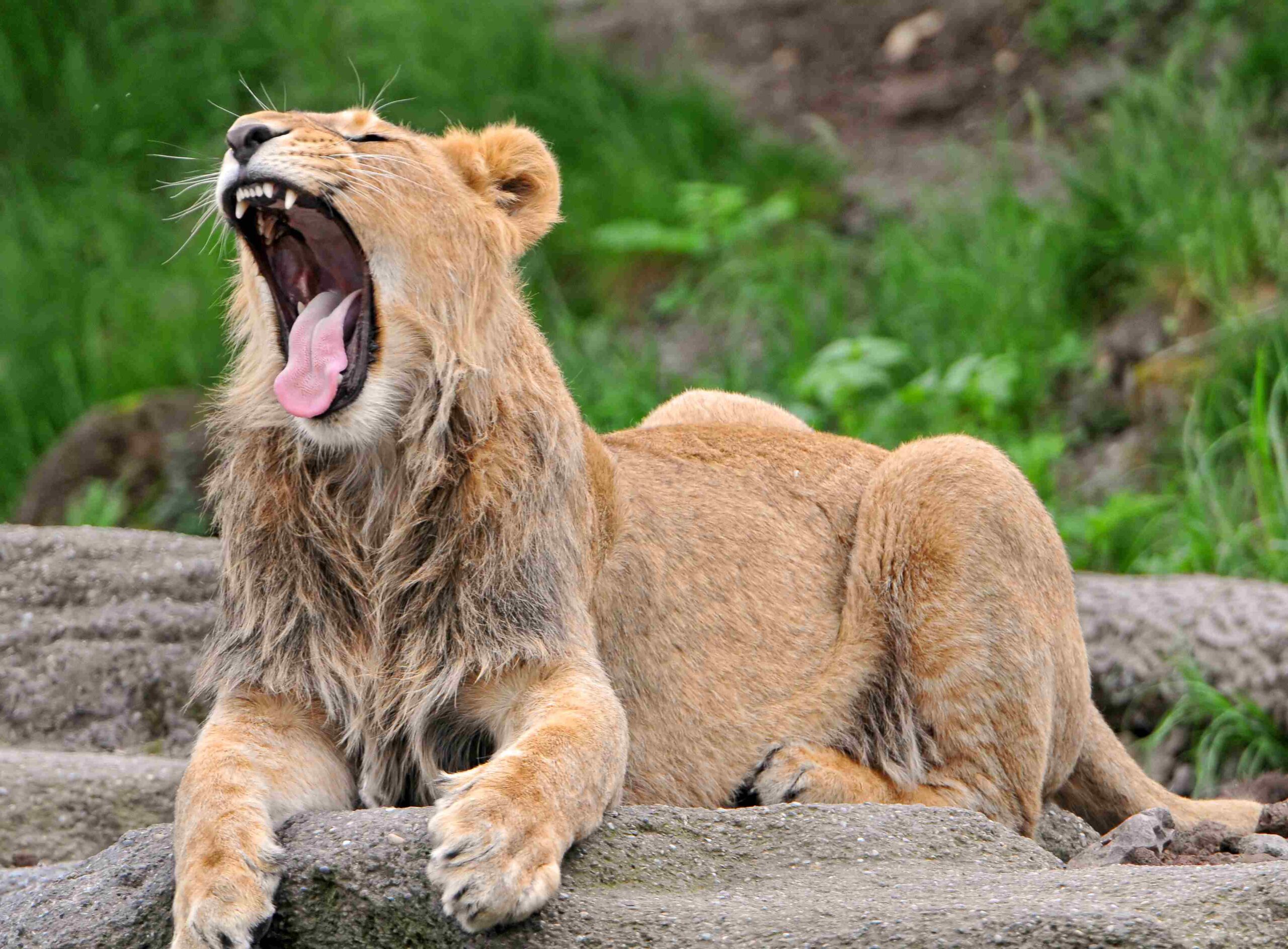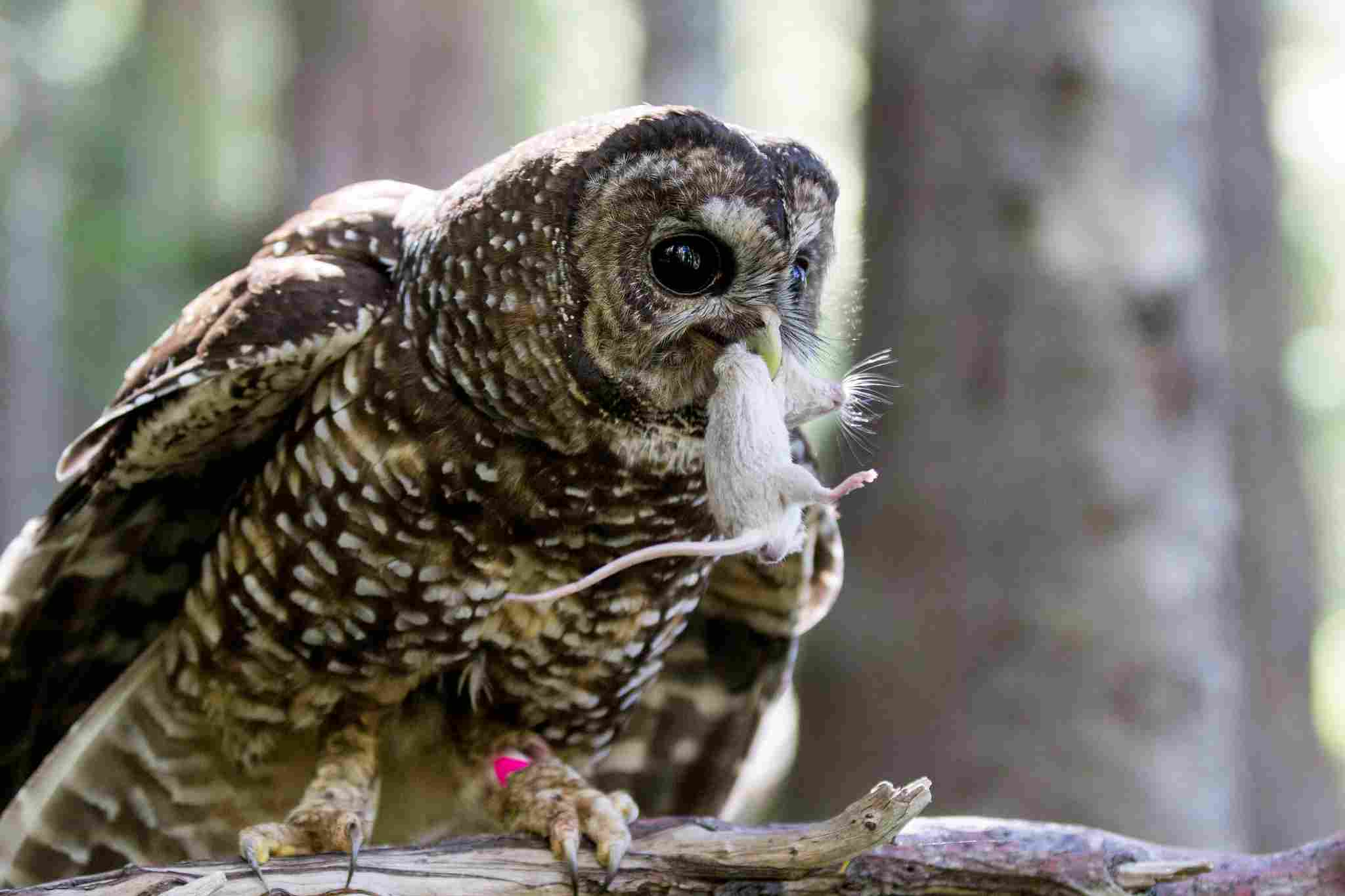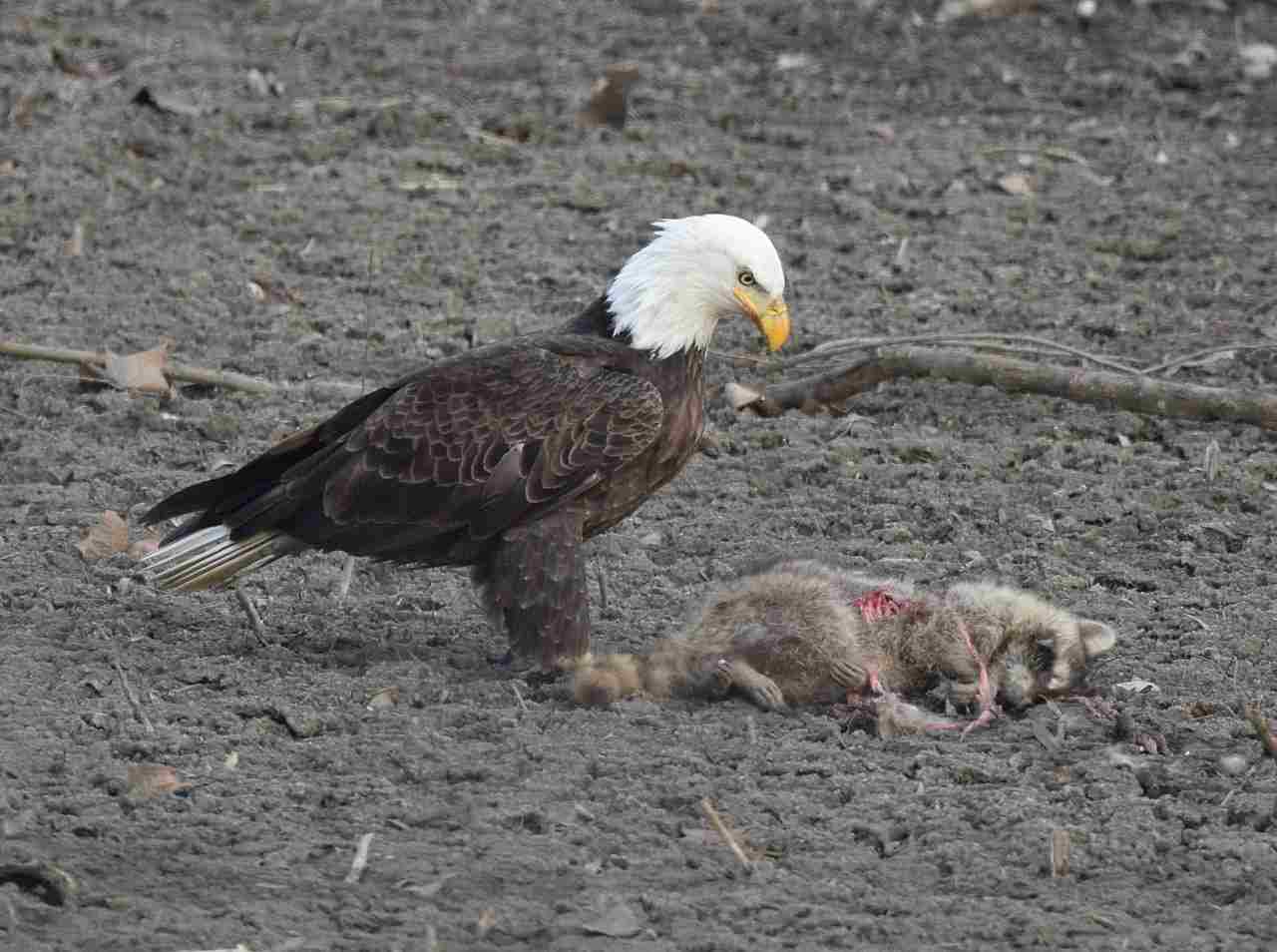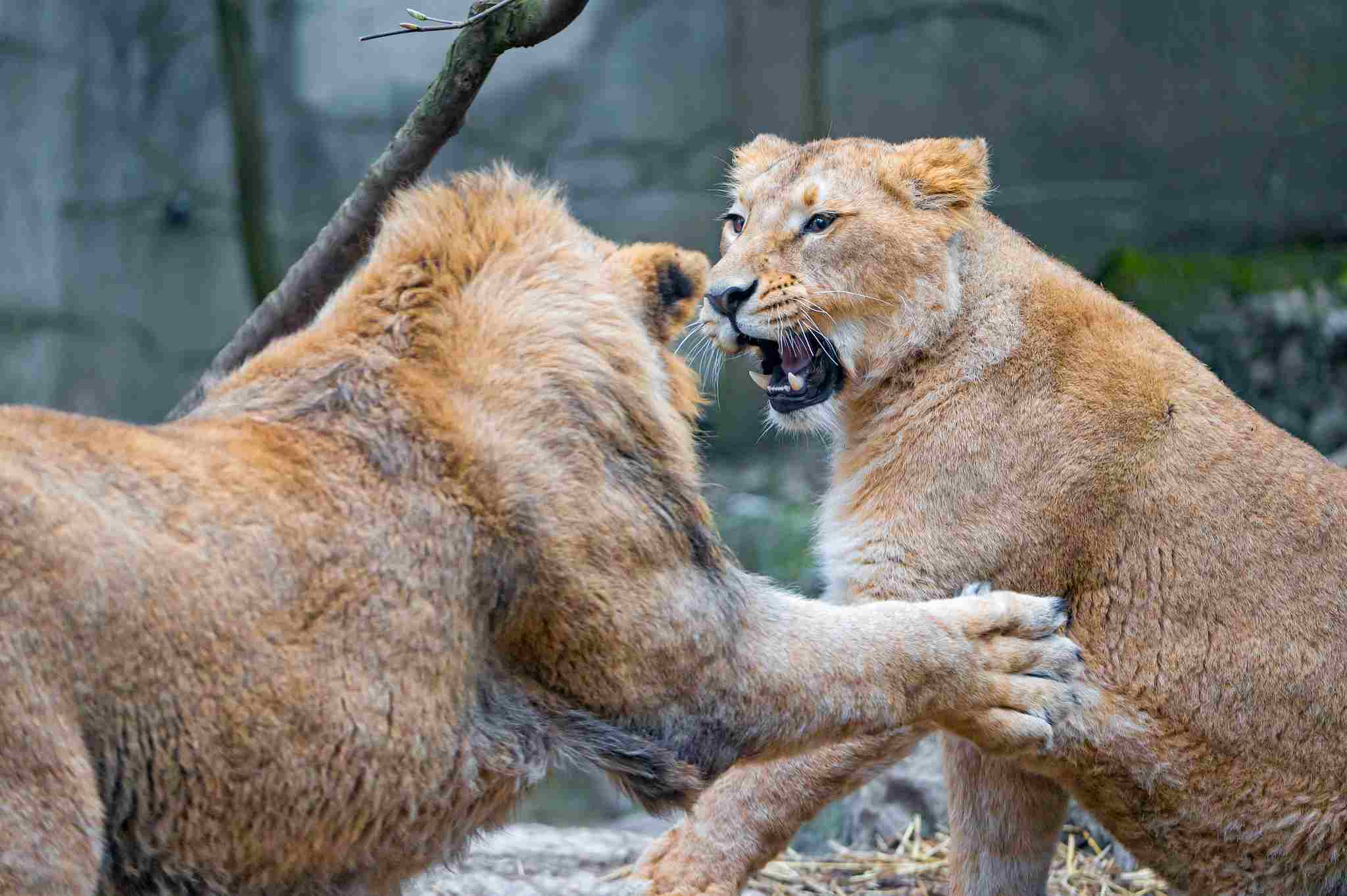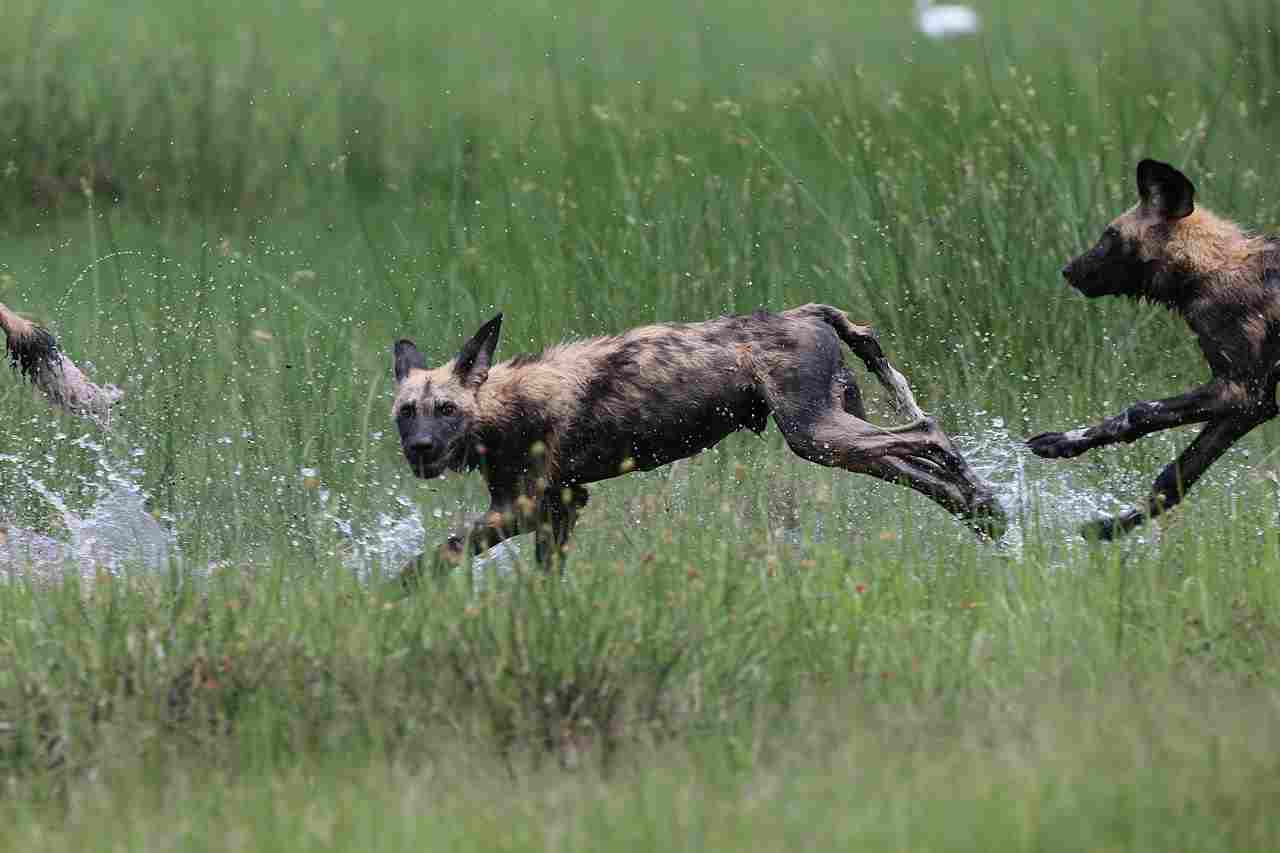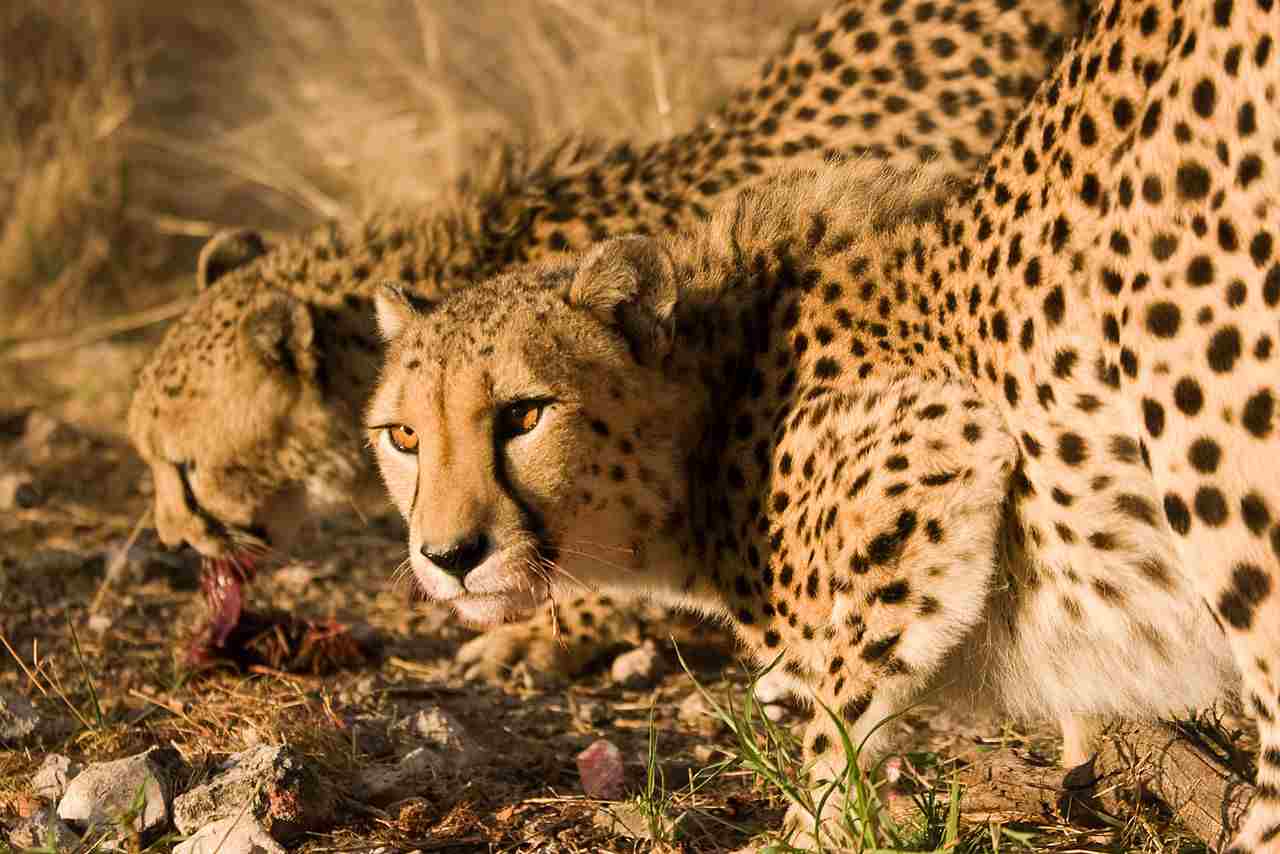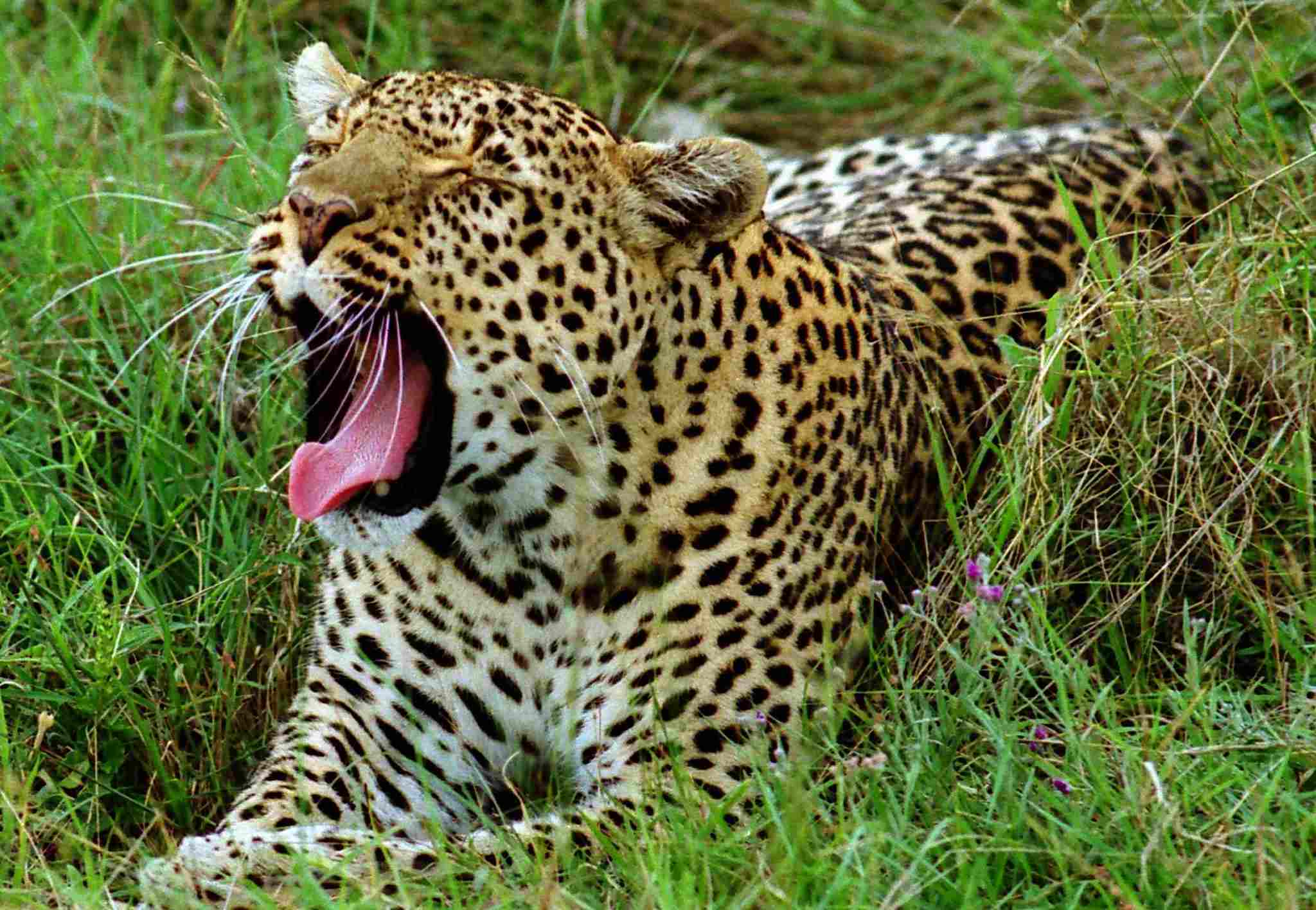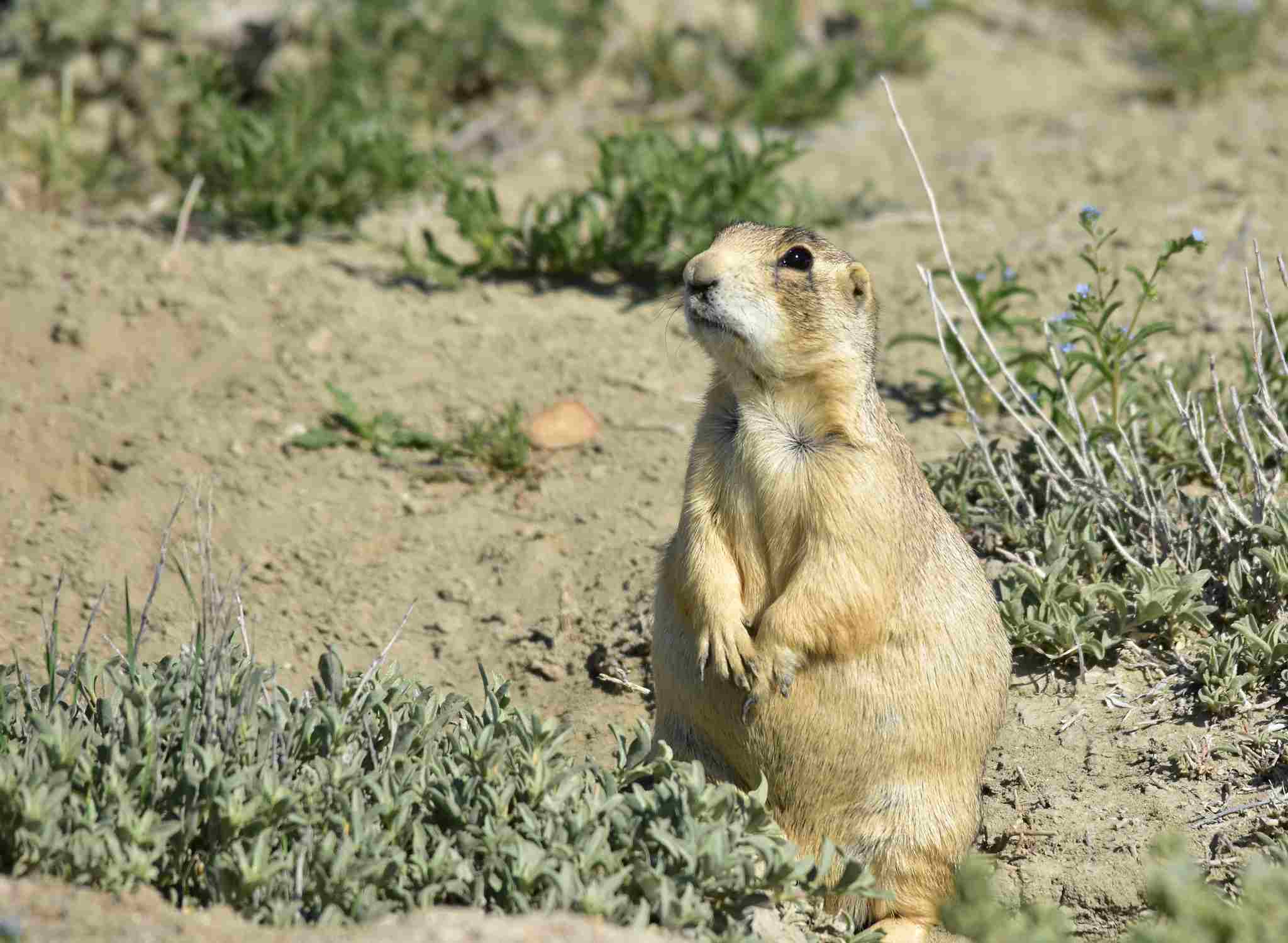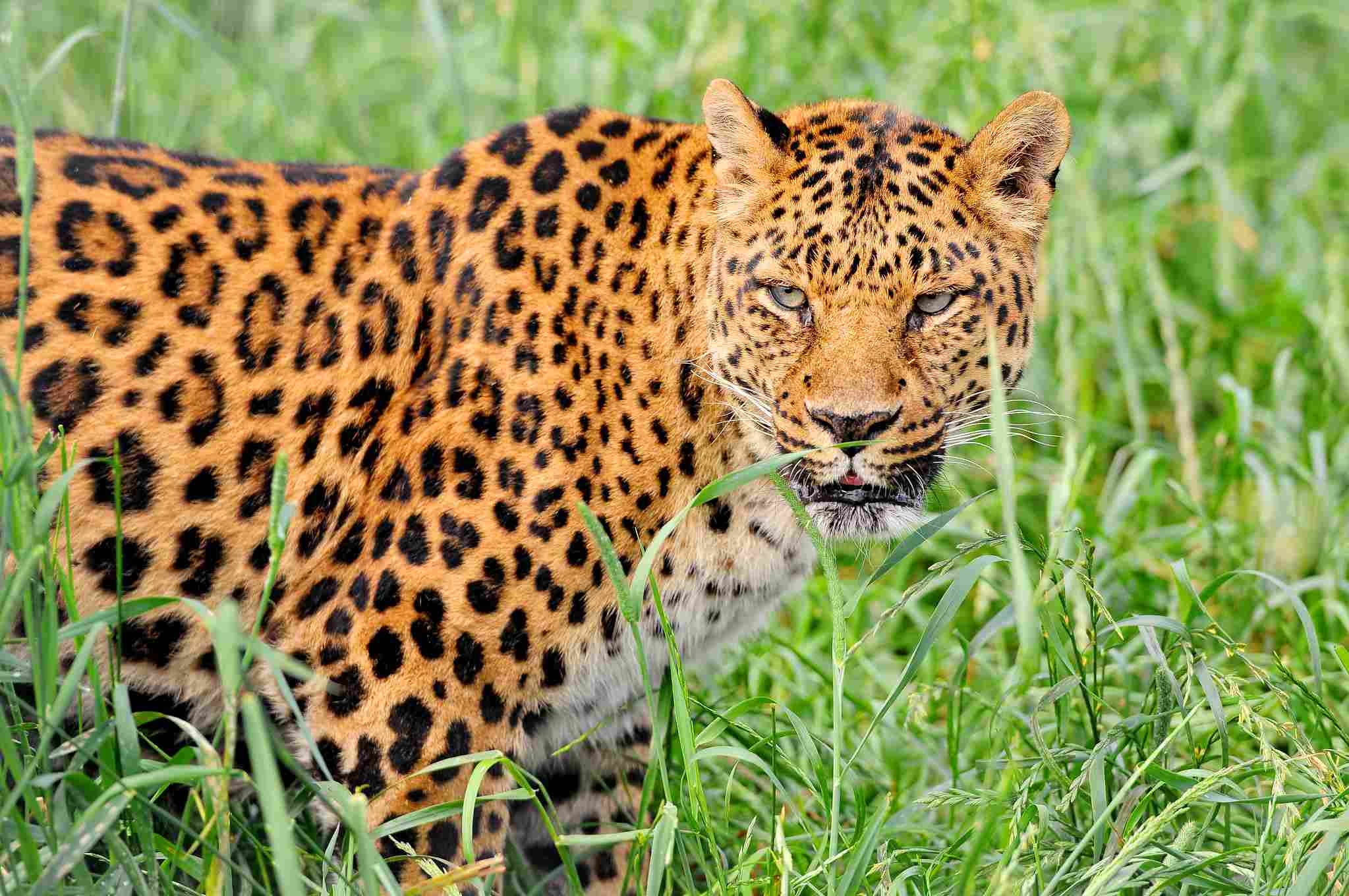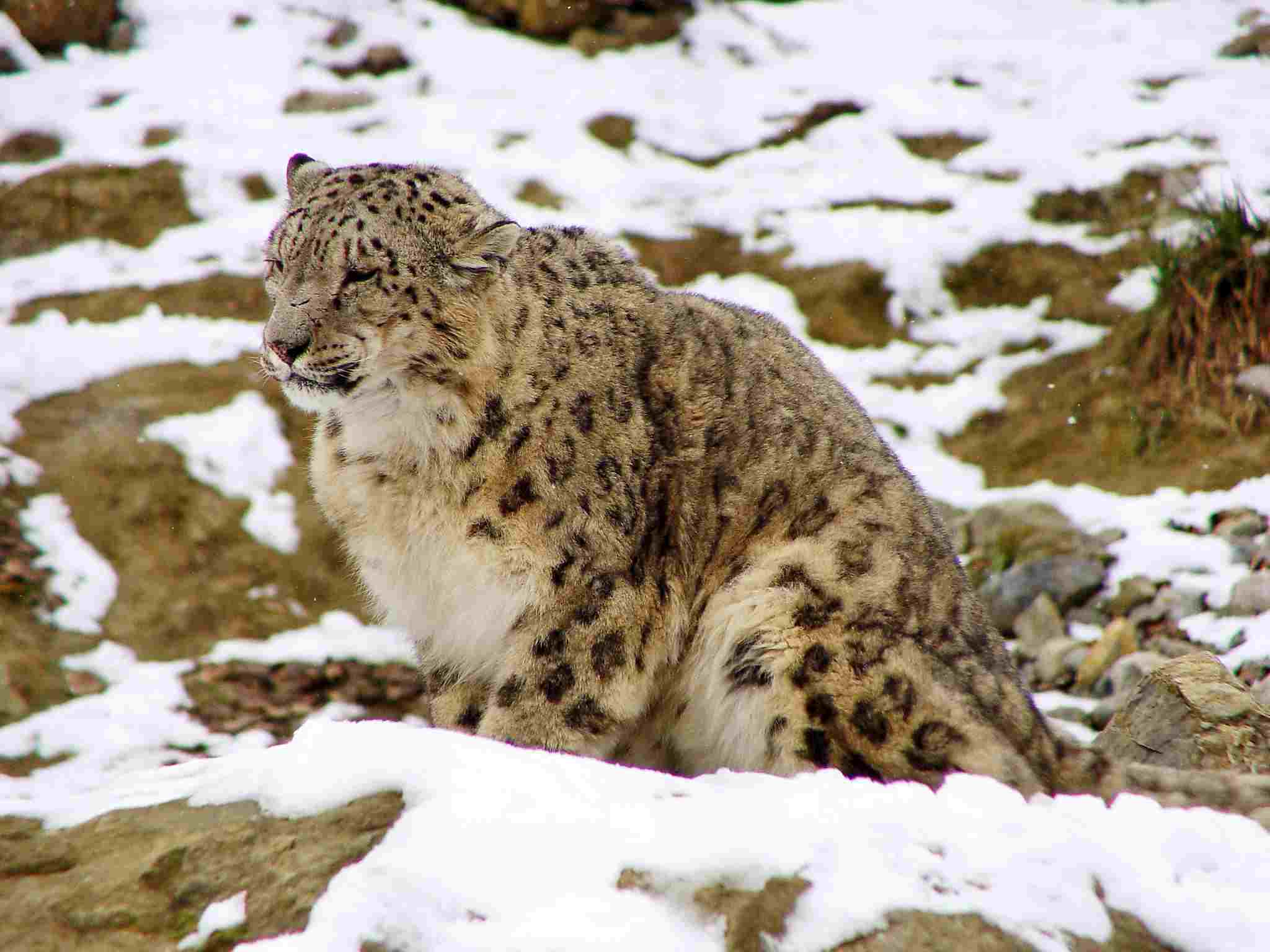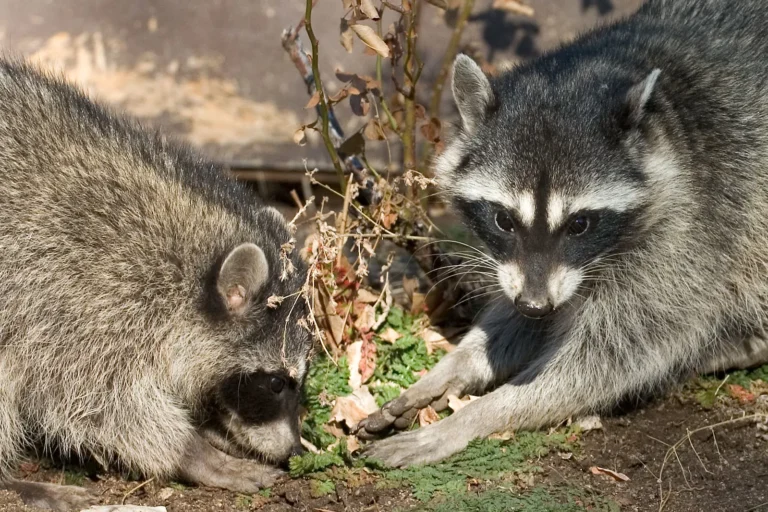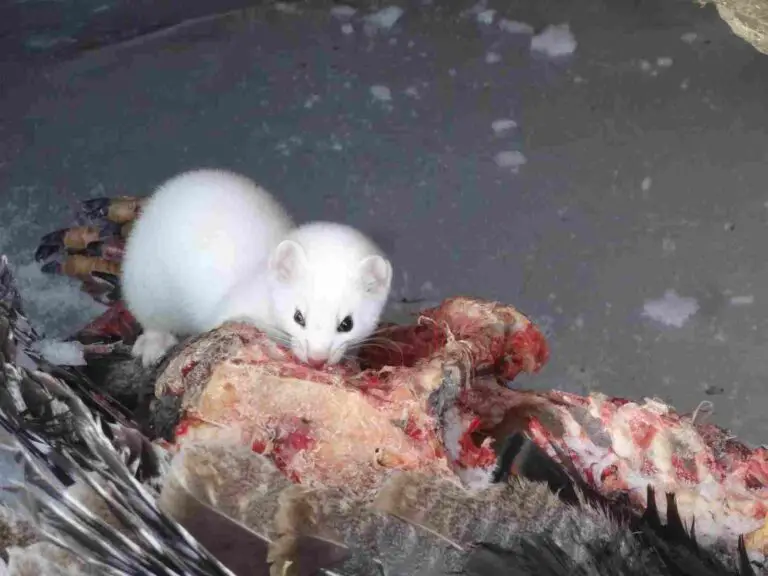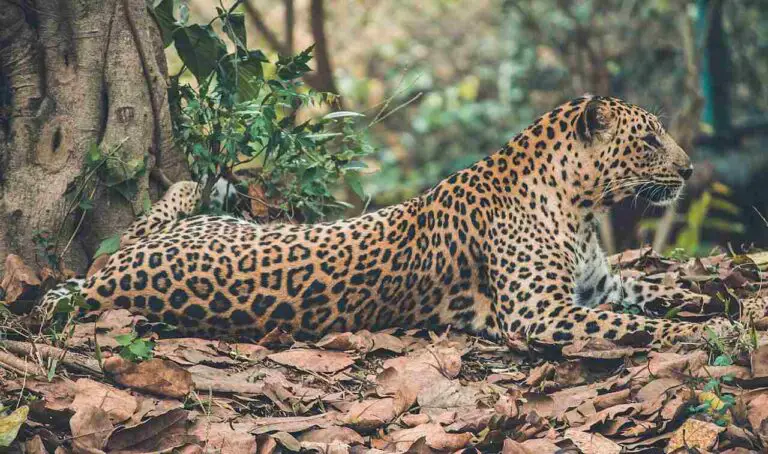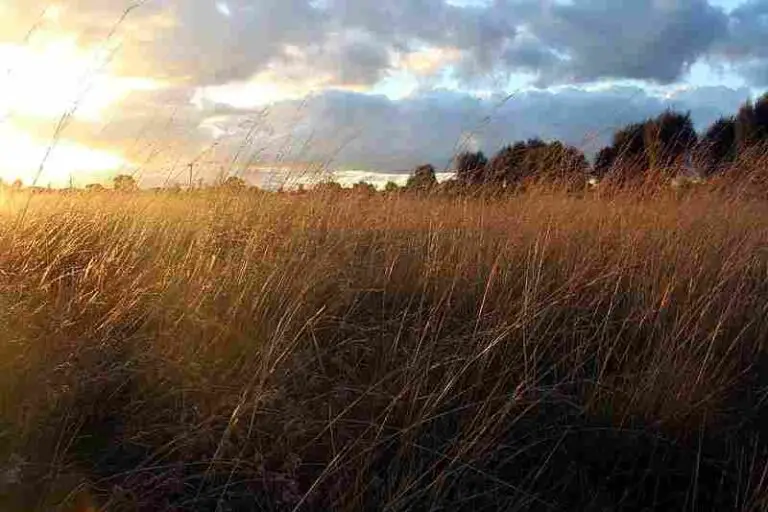13+ Predators In Africa And Their Characteristics
Examples of predators in Africa are cheetahs, leopards, and lions, which represent the iconic big cats known for their speed, adaptability, and social structures. Hyenas, often misunderstood, play a crucial role in ecosystems through their hunting and scavenging behaviors. African wild dogs are among the most endangered carnivores, relying on teamwork and endurance to hunt. Nile crocodiles are formidable freshwater predators, while owls and African fish eagles represent a range of avian hunters with specialized adaptations for night hunting and fishing, respectively. African rock pythons, one of the largest snake species, use powerful constriction to subdue their prey. Overall, these diverse predators play vital roles in maintaining the ecological balance, but face various threats such as habitat loss, human-wildlife conflict, and poaching.
1. Cheetah
The cheetah (Acinonyx jubatus) is the fastest land animal on Earth, reaching speeds up to 70 mph (112 km/h). Unlike other big cats in Africa, cheetahs rely on their incredible acceleration and speed to hunt prey, typically antelope like impala and gazelles. With their lightweight build, long slender legs, and large nasal passages, cheetahs are built for speed, allowing them to chase down their quarry over short distances. However, this high-speed chase is energy-intensive, which means they must rely on stealth and strategy to get close to their prey before sprinting.
Cheetahs are typically found in open savannas, grasslands, and desert environments where they have the space to run. They are generally solitary animals, with females living independently and males forming small coalitions for protection and territory control. Unlike other big cats, cheetahs are not strong climbers and do not roar; instead, they communicate through a range of vocalizations, such as chirps and purrs. Despite their speed and agility, cheetahs face numerous threats, including habitat loss and competition from larger predators, leading to a concerning decline in their populations.
2. Leopard
The leopard (Panthera pardus) is a remarkably versatile and adaptable big cat found across Africa and parts of Asia. Known for its striking rosette-patterned coat, the leopard is an elusive and solitary predator, capable of thriving in a range of habitats from dense forests and savannas to mountains and deserts. Unlike many other big cats, leopards are adept climbers, often dragging their prey into trees to keep it safe from scavengers like hyenas and lions. This arboreal skill also provides them with a vantage point for scouting prey and avoiding other predators.
Leopards are opportunistic hunters with a varied diet, including small mammals, birds, reptiles, and larger ungulates. Their adaptability and stealth allow them to coexist with human populations, but they face significant threats from habitat loss, poaching, and human-wildlife conflict. Leopards play a vital role in ecosystems by controlling prey populations, yet their elusive nature makes them difficult to study and conserve. Despite these challenges, they remain one of the most widely distributed big cats in the world.
3. Hyena
Hyenas are often misunderstood predators, with the spotted hyena (Crocuta crocuta) being the most well-known among them. Spotted hyenas live in complex social groups called clans, which can consist of dozens of individuals. They have a matriarchal social structure, with females dominating the males. Despite their reputation as scavengers, hyenas are highly skilled hunters, often forming coordinated teams to bring down large prey like wildebeests and zebras. Their powerful jaws and strong digestive systems enable them to consume and digest almost every part of their kills, leaving little waste.
Beyond their hunting prowess, hyenas are known for their distinctive vocalizations, including whoops, laughs, and growls, which they use to communicate with each other. These vocalizations play a crucial role in clan cohesion and hunting coordination. Hyenas are integral to their ecosystems, controlling prey populations and cleaning up carcasses, yet they are often persecuted due to negative stereotypes and competition with humans. Conservation efforts are needed to address these misconceptions and ensure the survival of hyena populations in the wild.
4. Lion
Lions (Panthera leo) are iconic big cats known for their majestic manes and social structure. Unlike most other cat species, lions live in prides, consisting of related females, their cubs, and a smaller number of males. This social structure allows them to cooperate in hunting and rearing young. Lions primarily hunt large ungulates like buffalo and antelope, using coordinated teamwork to bring down their prey. The males defend the pride’s territory, often engaging in fierce battles with rival males, while females do most of the hunting and cub-rearing.
Lions inhabit a range of environments, from savannas to open woodlands, but they are vulnerable to habitat loss and human-wildlife conflict. The decline in prey populations, poaching, and retaliatory killings by farmers all pose significant threats to lion populations. Conservation efforts focus on creating protected areas and promoting coexistence with local communities. Lions play a crucial role in their ecosystems by regulating prey populations, and their social structure makes them a unique and fascinating species to study.
5. African Wild Dog
The African wild dog (Lycaon pictus), also known as the painted dog, is a highly social and cooperative predator. These dogs live in packs with a strict social hierarchy, led by a dominant breeding pair. Cooperation is the key to their success, with pack members working together to hunt and care for their young. African wild dogs are known for their remarkable endurance and cooperative hunting strategies, often using complex tactics to outmaneuver their prey, such as impalas and other antelope.
Despite their hunting prowess and unique social structure, African wild dogs are among the most endangered carnivores in Africa. Habitat fragmentation, human-wildlife conflict, and diseases like rabies have significantly reduced their populations. Conservation efforts are focused on creating corridors to connect fragmented habitats and reducing conflict with humans. African wild dogs play a critical role in their ecosystems by regulating prey populations, and their loss would have significant ecological consequences.
6. Caracal
The caracal (Caracal caracal) is a sleek and agile wild cat known for its distinctive tufted ears and remarkable leaping ability. These cats are found in various habitats across Africa and parts of Asia, from savannas and deserts to forests and mountains. Caracals are solitary and highly territorial, with males typically having larger territories than females. They are opportunistic hunters, preying on small mammals, birds, and reptiles. Caracals are especially known for their ability to leap high into the air to catch birds in mid-flight, a unique hunting technique among cats.
Caracals are generally elusive and avoid human settlements, but they can come into conflict with farmers when they prey on livestock or poultry. Despite these challenges, caracals are relatively adaptable and not currently considered endangered. Conservation efforts focus on managing human-wildlife conflict and protecting their habitats from encroachment. The caracal’s agility and striking appearance make it a captivating subject for wildlife enthusiasts and photographers, but its shy and secretive nature ensures that it remains an enigma in many parts of its range.
7. African Golden Cat
The African golden cat (Caracal aurata) is a rare and elusive wild cat found in the dense rainforests of Central and West Africa. This medium-sized cat is closely related to the caracal and the serval, yet it has a unique appearance characterized by a golden-brown or reddish coat with occasional spots or stripes. African golden cats are solitary and primarily nocturnal, using their excellent climbing skills to navigate the forest canopy and their keen senses to hunt small mammals, birds, and reptiles.
Due to their elusive nature and the remote habitats they occupy, much about the African golden cat remains unknown. Their populations are threatened by habitat loss, deforestation, and bushmeat hunting. As the rainforests of Africa continue to shrink, the survival of this rare species becomes increasingly uncertain. Conservation efforts focus on preserving forest habitats and curbing illegal hunting practices, though more research is needed to fully understand the behavior and ecology of these mysterious cats.
8. Nile Crocodile
The Nile crocodile (Crocodylus niloticus) is one of the largest and most fearsome reptiles in Africa. Found in freshwater habitats such as rivers, lakes, and swamps, these crocodiles are apex predators, capable of taking down large prey, including wildebeests, zebras, and even buffalo. Nile crocodiles are opportunistic feeders, using ambush tactics to catch prey at the water’s edge or while crossing bodies of water. They have a powerful bite and are known to drag prey underwater to drown them before tearing them apart with their massive jaws.
Despite their fearsome reputation, Nile crocodiles play a crucial role in maintaining the balance of freshwater ecosystems by controlling prey populations and scavenging dead animals. However, they are often seen as a threat to humans, leading to conflicts in areas where their habitats overlap with human settlements. Nile crocodiles are also hunted for their skins, posing an additional threat to their populations. Conservation efforts aim to manage human-crocodile conflict and protect their habitats to ensure the survival of this ancient reptile species.
9. African Fish Eagle
The African fish eagle (Haliaeetus vocifer) is an iconic bird of prey found near freshwater lakes, rivers, and wetlands throughout sub-Saharan Africa. Known for its distinctive call, which is often likened to the “voice of Africa,” the African fish eagle has a striking appearance with its white head, chestnut body, and dark wings. As the name suggests, fish make up a significant portion of its diet, but it also preys on birds, reptiles, and small mammals. The fish eagle’s keen eyesight and powerful talons allow it to swiftly capture fish from the water’s surface.
These eagles are often seen perched on high vantage points near water bodies, where they can survey their surroundings for potential prey. They are monogamous and tend to form lifelong pair bonds, with pairs building large nests in trees close to the water. Despite their resilience and adaptability, African fish eagles face threats from habitat loss and pollution, particularly from pesticides that can accumulate in their prey. Conservation efforts focus on preserving wetland habitats and reducing water pollution to ensure these majestic birds continue to thrive.
10. Congo Serpent Eagle
The Congo serpent eagle (Dryotriorchis spectabilis) is a unique bird of prey native to the dense rainforests of Central and West Africa. Unlike many other raptors, the Congo serpent eagle specializes in hunting snakes and other reptiles, using its keen eyesight and agile flight to navigate through the forest canopy. It has a striking appearance with barred patterns on its wings and tail, and its relatively short wingspan helps it maneuver through thick vegetation. This specialized diet makes the Congo serpent eagle an important predator in its ecosystem, helping control snake populations.
Little is known about the behavior and breeding habits of the Congo serpent eagle, partly due to its elusive nature and remote habitat. However, the ongoing deforestation and habitat loss in Central and West Africa threaten this species’ survival. Conservation efforts aim to protect the rainforests where these eagles live and raise awareness about their ecological role. Research into their life cycle and reproductive habits is also essential to develop effective conservation strategies and ensure the long-term survival of this unique raptor.
11. Pied Crow
The pied crow (Corvus albus) is a highly adaptable and intelligent bird found across sub-Saharan Africa. It has a striking black-and-white plumage, with a black head, wings, and tail, contrasted by a white chest and shoulders. Pied crows are opportunistic omnivores, feeding on a wide range of food sources, including insects, small vertebrates, fruits, and carrion. Their adaptability allows them to thrive in various habitats, from urban areas and farmlands to savannas and forests.
Pied crows are social birds that often form large groups, especially when foraging or roosting. They are known for their intelligence and problem-solving skills, often observed using tools to obtain food. Despite their resilience, pied crows face threats from habitat loss and human persecution in some areas where they are considered pests. Conservation efforts focus on maintaining their habitats and reducing conflict with humans. Their intelligence and adaptability make them fascinating subjects for study and observation, contributing to our understanding of avian behavior and intelligence.
12. Owl
Owls in Africa encompass a diverse group of birds of prey, with species ranging from the diminutive African scops owl (Otus senegalensis) to the formidable Verreaux’s eagle-owl (Bubo lacteus). These nocturnal hunters are known for their silent flight, keen hearing, and exceptional night vision. Owls primarily feed on small mammals, birds, insects, and reptiles, with some species specializing in particular prey. Their ability to rotate their heads up to 270 degrees allows them to survey their surroundings without moving their bodies, providing them with a stealth advantage.
Owls play an essential role in controlling rodent populations, which helps maintain ecological balance and reduces crop damage. However, they face threats from habitat loss and human disturbances, especially in areas where traditional beliefs lead to persecution of these birds. Conservation efforts for owls in Africa focus on habitat preservation and raising awareness about their beneficial role in ecosystems. Owls are often a source of fascination due to their mysterious nature and association with folklore, making them important ambassadors for wildlife conservation.
13. African Rock Python
The African rock python (Python sebae) is the largest snake species in Africa, capable of reaching lengths of up to 20 feet (6 meters) or more. This non-venomous constrictor is found in a variety of habitats, including savannas, forests, and wetlands. African rock pythons are opportunistic feeders, preying on mammals, birds, and occasionally reptiles. Their powerful constriction method involves wrapping their muscular bodies around their prey, gradually tightening until the prey suffocates. This allows them to tackle large prey, including antelope and even crocodiles.
Despite their size and power, African rock pythons face several threats, including habitat loss, hunting, and the exotic pet trade. They are sometimes persecuted due to their fearsome reputation and the potential threat they pose to livestock. Conservation efforts focus on protecting their habitats and educating local communities about their ecological role in controlling rodent populations. African rock pythons play a vital role in their ecosystems, but their size and predatory behavior often lead to conflicts with humans, requiring careful management and conservation strategies.
14. Serval
The serval (Leptailurus serval) is a medium-sized wild cat native to Africa, recognized for its long legs and large ears. These distinctive features allow servals to excel at hunting in tall grass and marshy areas, where their excellent hearing helps them detect the slightest movements of small prey like rodents, birds, and insects. The serval’s long legs give it a unique advantage for pouncing, enabling it to leap high into the air to catch birds or traverse challenging terrain.
Servals are solitary animals, typically active during the early morning and evening hours, although some can be nocturnal depending on their habitat. They are known for their agility and ability to climb and swim, making them adaptable to various environments. Despite their adaptability, servals face threats from habitat loss and human-wildlife conflict, as they sometimes prey on poultry. Conservation efforts aim to protect their habitats and mitigate conflicts with farmers. Servals are often admired for their graceful appearance and agility, making them a popular subject in wildlife photography and conservation education.
15. Honey Badger
The honey badger (Mellivora capensis), also known as the ratel, is a fearless and tenacious predator found throughout sub-Saharan Africa and parts of the Middle East and India. Honey badgers are known for their aggressive behavior and ability to defend themselves against much larger predators, including lions and leopards. Despite their small size, they possess strong claws, sharp teeth, and thick skin, making them formidable opponents. Honey badgers are opportunistic feeders, eating a wide range of foods, from small mammals and birds to reptiles and honey.
Honey badgers are primarily nocturnal but can be active during the day in certain regions. They are often associated with beehives due to their fondness for honey and bee larvae, leading to their common name. Despite their aggressive reputation, honey badgers play an important role in ecosystems by controlling populations of small predators and scavenging carcasses. Conservation efforts focus on protecting their habitats and educating local communities about their ecological role. Honey badgers have gained popularity in popular culture due to their fearlessness, making them a symbol of resilience and tenacity.
*Summary
-
Cheetah
-
Fastest land animal, reaching speeds up to 70 mph (112 km/h).
-
Relies on stealth and strategy for hunting, with high-speed chases.
-
Faces threats from habitat loss and competition from larger predators.
-
-
Leopard
-
Versatile and adaptable, found across Africa and parts of Asia.
-
Arboreal, dragging prey into trees to avoid scavengers.
-
Threatened by habitat loss, poaching, and human-wildlife conflict.
-
-
Hyena
-
Spotted hyenas are skilled hunters with a matriarchal social structure.
-
Known for strong jaws and scavenging behavior.
-
Contribute to ecosystem health by cleaning up carcasses.
-
-
Lion
-
Social big cats living in prides, hunting large prey with coordinated teamwork.
-
Males defend territory; females hunt and rear cubs.
-
Threatened by habitat loss, human-wildlife conflict, and poaching.
-
-
African Wild Dog
-
Highly social and cooperative, hunting in packs.
-
Known for endurance and complex hunting strategies.
-
One of the most endangered carnivores in Africa due to habitat loss and diseases.
-
-
Caracal
-
Medium-sized wild cat known for tufted ears and agility.
-
Skilled at hunting small mammals and birds, often leaping to catch prey.
-
Faces threats from habitat loss and human-wildlife conflict.
-
-
African Golden Cat
-
Rare and elusive, found in dense rainforests.
-
Solitary and primarily nocturnal, with a varied diet.
-
Threatened by habitat loss and bushmeat hunting.
-
-
Nile Crocodile
-
One of the largest reptiles in Africa, apex predator in freshwater habitats.
-
Ambushes prey and has a powerful bite.
-
Threatened by habitat loss, human conflict, and hunting for skins.
-
-
African Fish Eagle
-
Iconic bird of prey with a distinctive call.
-
Primarily feeds on fish but also preys on birds and small mammals.
-
Faces threats from habitat loss and water pollution.
-
-
Congo Serpent Eagle
-
Specializes in hunting snakes and other reptiles in dense rainforests.
-
Threatened by deforestation and habitat loss.
-
Conservation efforts focus on protecting forest habitats.
-
-
Pied Crow
-
Highly adaptable and intelligent, found across sub-Saharan Africa.
-
Opportunistic omnivores with social behavior.
-
Threatened by habitat loss and human persecution.
-
-
Owl
-
Diverse group of nocturnal birds of prey, specialized in silent flight and keen hearing.
-
Play a crucial role in controlling rodent populations.
-
Threatened by habitat loss and human disturbances.
-
-
African Rock Python
-
Largest snake species in Africa, a powerful constrictor.
-
Preys on mammals, birds, and occasionally reptiles.
-
Faces threats from habitat loss, hunting, and the exotic pet trade.
-
-
Serval
-
Medium-sized wild cat with long legs and large ears, known for agility.
-
Opportunistic hunter in various habitats.
-
Threatened by habitat loss and human-wildlife conflict.
-
-
Honey Badger
-
Fearless and tenacious, known for aggressive behavior.
-
Opportunistic feeders, eating small mammals, birds, reptiles, and honey.
-
Plays a crucial role in ecosystems, despite aggressive reputation.
-
| Predator | Key Traits | Threats |
| Cheetah | Fastest land animal, stealth hunter, high-speed chases |
Habitat loss, competition from other predators
|
| Leopard | Adaptable, arboreal, versatile hunter |
Habitat loss, poaching, human-wildlife conflict
|
| Hyena | Skilled hunters, matriarchal society, scavengers |
Negative stereotypes, persecution
|
| Lion | Social structure in prides, coordinated hunters |
Habitat loss, human-wildlife conflict, poaching
|
| African Wild Dog | Social and cooperative, pack hunting |
Habitat loss, diseases like rabies, poaching
|
| Caracal | Medium-sized, tufted ears, skilled hunter |
Habitat loss, human-wildlife conflict
|
| African Golden Cat | Rare and elusive, solitary, nocturnal |
Habitat loss, bushmeat hunting
|
| Nile Crocodile | Apex predator, ambushes prey, powerful bite |
Habitat loss, human conflict, hunting for skins
|
| African Fish Eagle | Iconic bird of prey, distinctive call, fish-based diet |
Habitat loss, water pollution
|
| Congo Serpent Eagle | Specializes in hunting snakes, dense rainforests |
Deforestation, habitat loss
|
| Pied Crow | Adaptable, social, intelligent |
Habitat loss, human persecution
|
| Owl | Nocturnal birds of prey, silent flight, keen hearing |
Habitat loss, human disturbances
|
| African Rock Python | Largest African snake, constrictor, opportunistic |
Habitat loss, hunting, exotic pet trade
|
| Serval | Medium-sized, long legs, opportunistic hunter |
Habitat loss, human-wildlife conflict
|
| Honey Badger | Fearless, aggressive, opportunistic feeder |
Habitat loss, persecution due to aggressive reputation
|
